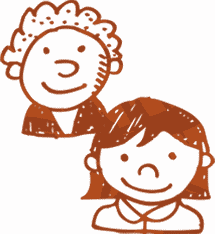Helping Young Children Express and Regulate Feelings
Rebecca Moore | Posted on |


As promised at the end of my last blog and inspired by the Dr. Seuss quote, “A person’s a person no matter how small,” I will explore how young children experience, express and regulate their feelings and how parents can support them with this important developmental task.
Young children often mystify us. Sometimes they are so transparent it is easy to know what they are thinking and feeling. At other times they are perplexing, and we cannot make sense of their behaviors or feelings. We are often pushed to ask them “Why did you do that?” or “What are you feeling?” when we are most confused or frustrated with their behavior. At moments like this, they are unlikely to be able to put into words what they are thinking or feeling, which can frustrate us even more and perhaps makes us feel inadequate as empathic parents. Young children do have very complex and at times very strong feelings. They experience happiness and joy, anger and rage, sadness and depression, excitement, and anxiety. While their language is typically well developed it is often not sophisticated enough for them to express more complex feelings or conflicts. However, they use imaginative play to express themselves.
Imaginative play allows young children to express thoughts and feelings that they are unable to put into words. Watch children at play and you will see several common and universal themes emerge and learn so much about their emotional world. Young children play about good guys and bad guys, monsters, being a baby, and growing up. They enjoy play with other children, but they also enjoy time alone playing out different scenarios that carry the most meaning for them. Children use imaginative play to assimilate difficult experiences, express feelings, repeat pleasurable experiences, release tension and energy and manage conflict.
Emotional development begins at birth as we can observe happiness, joy, sadness, distress, interest, and anger in early infancy. By 3 months we can observe surprise, disgust, and fear; and around 18-24 months, embarrassment and shame. Infants need an adult to help them regulate their emotional states. When a baby cries, we go through the list of questions: Is she hungry, tired, cold, too hot, afraid, overwhelmed? Many times, we figure out the physical or emotional state behind the cry, provide soothing, and the baby calms. However, there are times when we cannot figure out why a baby is crying. In these moments it is easy to become overwhelmed and not know what to do. Sometimes the solution is to stay with the baby during these difficult moments continuing to try the soothing techniques we typically use as babies appreciate that a caring and sensitive adult is trying to contain their upset. The more we can do this the more likely the baby will begin to feel “seen” and understood. These are the challenging and hard moments of parenting. They are difficult to navigate alone and underscore the importance of being able to ask for help from a partner, a family member, or a friend.
Every child feels and expresses emotions in unique ways. Children also develop individual styles of emotional expression. Some children express feelings intensely. It may not be difficult to figure out what they are feeling, but they may require some support to modulate and regulate. Other children are quieter and more muted in the ways they express feelings thus making it more difficult to figure out what they may be feeling. And still other children are easier to read as they express their feelings in clear ways and do not become intense or muted in their expressions.
Parents often ask, “How can I best support my child’s emotional development?”
Parents begin to comment physical and emotional states from the time their children are infants. They watch and learn about their infants and respond as best they can to their cues. Listening to and observing our children can give us so much information about them. We are responsible for helping our children develop the capacity to name and express feelings and learn to manage and regulate them. It is important to remember that we may have the most difficulty understanding or tolerating our children’s feelings if they are expressing a feeling that is difficult for us to acknowledge and manage in ourselves.
While we watch and listen and make attempts to name feelings, we try to remain reflective. This Reflective Stance as described by a dear friend and colleague, Arietta Slade can help us navigate the emotional worlds of our children and ourselves and support emotional growth and expression. You may find the following tips to be helpful.
- Understand development and the impact it has on a child’s ability to express and cope with feelings.
- Try to make sense of a child’s thoughts and feelings, reflect on them and reason about them.
- Make connections between a child’s feelings and behaviors. i.e. “I think you were mad I was late picking you up when you hit me.” While we make this connection, we also work to help our children find better strategies for expressing upset.
- Understand that our children’s feelings may be very different than our own, and it is important to remain curious about our own and our children’s feelings.
- Understand that our feelings affect our children. While we may think we are good at hiding anger, sadness or worry from them, children are very good at detecting when there is a mismatch between our feelings and the way we are responding to them. Children learn how to manage the big and difficult feelings by watching how we manage and regulate our feelings.
- It is helpful to reflect on our own feelings about parenting regularly and to always show ourselves gentle kindness.
